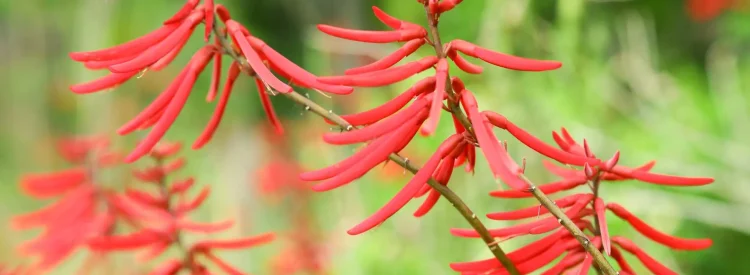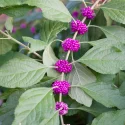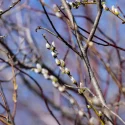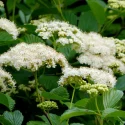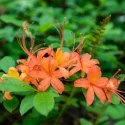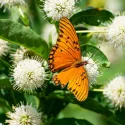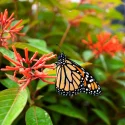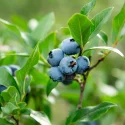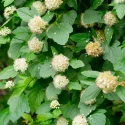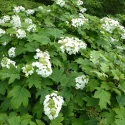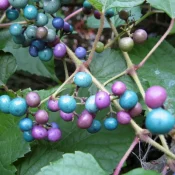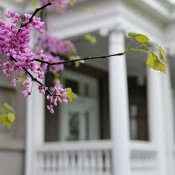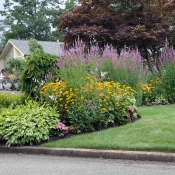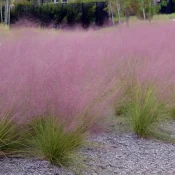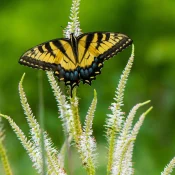This native, southern flower has an unforgettable shape when in bloom. Their sculptural bright-red flowers appear in the late spring into summer. The flowers turn into pea-like seed pods in the fall—the seeds are poisonous, so be careful when planting near pets or kids! Coralbean goes by many names: Cherokee Bean, Cardinal Spear, Red Cardinal, or Coral Bean (two words). No matter what you call it, these hummingbird favorites look stunning in southern gardens and require minimal care to thrive. Scroll on for care and planting tips.
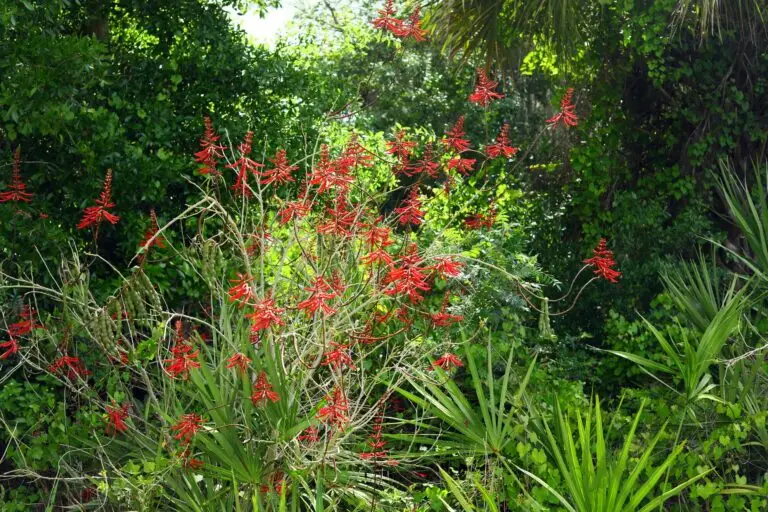
Coralbean is a stunning native flower that thrives in the hot, full sun of the South. Its bright red flowers in the spring and summer are butterfly and hummingbird favorites, and its green triangular leaves look brightly verdant when not in bloom. And that’s not all the benefits of planting Coralbean…
What are the benefits of planting Coralbean?
Planting native plants makes our yards and spaces gorgeous while helping the birds, butterflies, and animals (and helping save us time!) Here are three reasons why planting native is worth it:
- Without native plants, iconic animals like Monarch butterflies and songbirds won’t have the food or homes needed to survive
- Native plants save time and money: after the first year of getting established, native plants are happy with rain
- Native plants are gorgeous! Coralbean is a perfect example of how beautiful and resilient native plants are—they are always the best choice for our gardens.
New to native?
Before lawns and landscaping, native plants were here. They’ve fed birds, bees, and butterflies for thousands of years—and they’ll do the same in your yard. The best part? They’re easier to grow than you think.
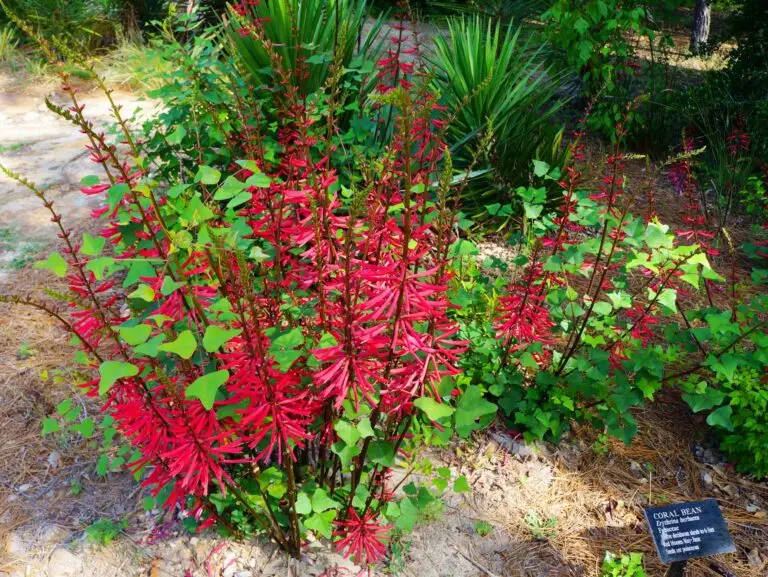
WARNING! Coralbean is not a great native plant for pets or kids
Coralbeans have evolved to have some pretty strong deterrents against being eaten. These evolutionary protections make them not great for planting near pets or kids. Warnings include:

The seeds are poisonous. After the bright red flowers come seed pods, which turn black. Inside these dark sculptures are bright red seeds that are highly toxic to humans. You can see from the picture how similar they look to candy—do not plant Coralbean near children!
The plant has thorns. Similar to a rose bush, Coralbean has thorns on its woody stems.
Coralbean planting tips
Now that we’ve got the warnings out of the way, there is still a lot to love and celebrate about this native plant! Highlights of planting Coralbean include:
- Happy in sandy, coarse soils, some of the more difficult places to plant in the warm South
- Easy to plant from seed: yes, the seeds are poisonous if you eat them, but collect the seeds and plant them for easy propagation
- Four seasons of beauty: bright triangular leaves appear after the flowers, giving lots to look at throughout the year
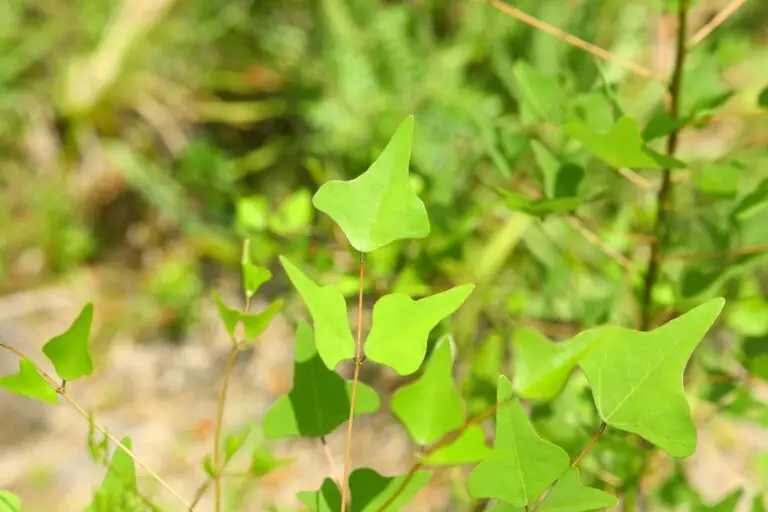
Where is Coralbean native?
Coralbean is a true southern flower, native to the southernmost United States from Georgia west to Texas.
The Clear Lake Chapter Native Plant Society of Texas has a great overview video (see below!) that includes where to plant and tips to ensure this gorgeous native southern plant thrives.
Where can I buy Coralbean plants or seeds?
Finding specific native plants can be challenging at conventional nurseries. To help make this a little easier, we’ve put together the following four resources:
Where can I find seeds and plants?
Finding native plants can be challenging (we partly blame Marie Antoinette.) To make it easier, we’ve assembled four sourcing ideas.
300+ native nurseries make finding one a breeze
Explore 100+ native-friendly eCommerce sites
Every state and province has a native plant society; find yours
Online Communities
Local Facebook groups are a great plant source
What are good Coralbean pairings?
Coralbeans are perfect pairings for other southern native gems like American Beautyberry, False Blue Indigo, Carolina Jessamine, Coral Honeysuckle, and coneflowers. Also, visit our Best Native Plants for Southern Gardens to find even more southern inspiration.
Coralbean is an excellent native flower for full sun, Southern gardens. It is a butterfly and hummingbird magnet when in bloom, and the singular shape of its triangular leaves makes it interesting even when not flowering. Its seeds are poisonous, so be mindful when planting near pets or kids. Don’t forget to visit our Southern native plant guide for more inspiration. Happy planting!
Sources
- Nelson, Gil. Best Native Plants for Southern Gardens: A Handbook for Gardeners, Homeowners, and Professionals, (2010), 318-319.
- USDA Plants Database, Redcardinal
- Lady Bird Johnson Wildflower Center, Erythrina herbacea
What if your feed was actually good for your mental health?
Give your algorithm a breath of fresh air and follow us.
